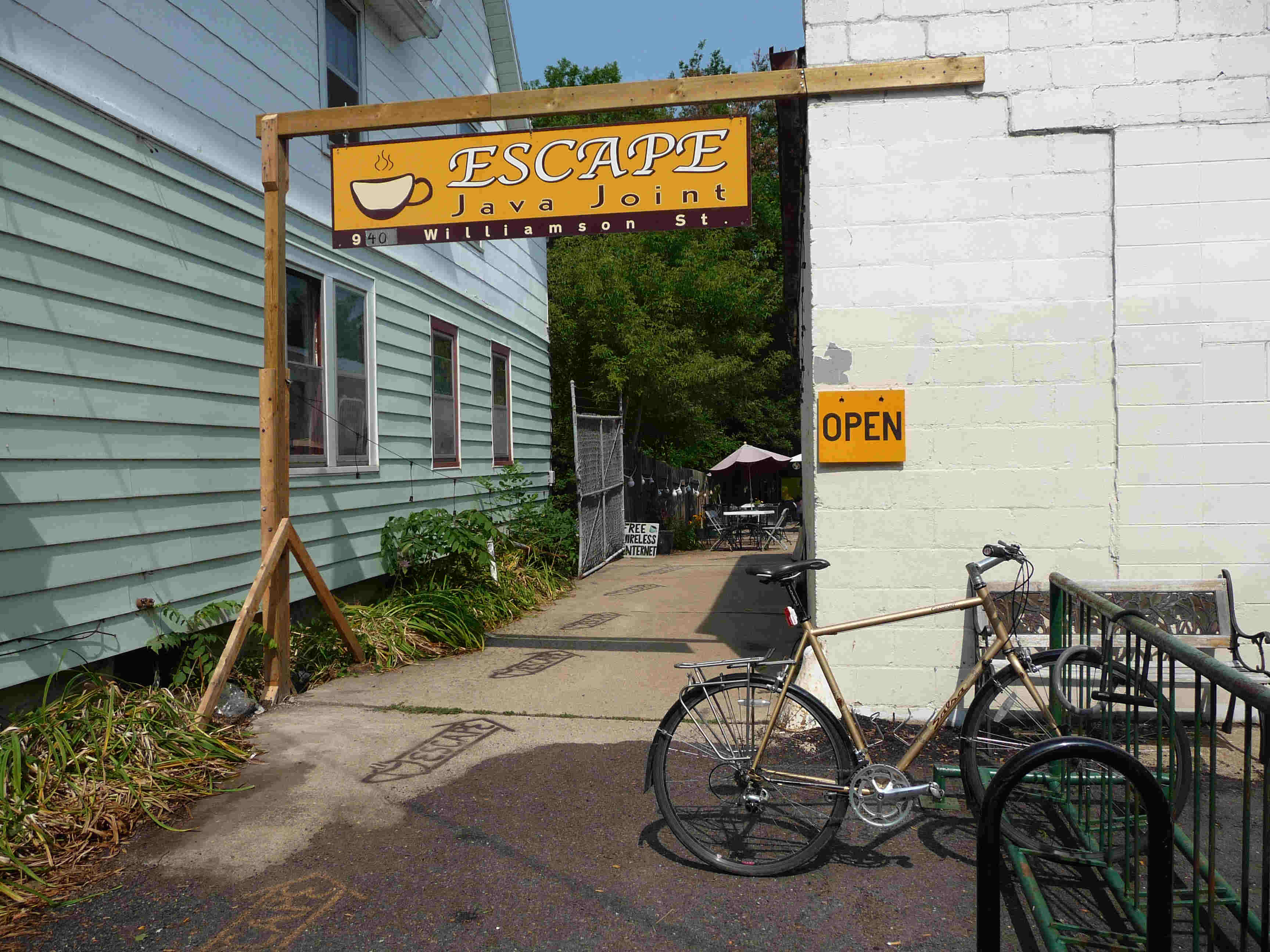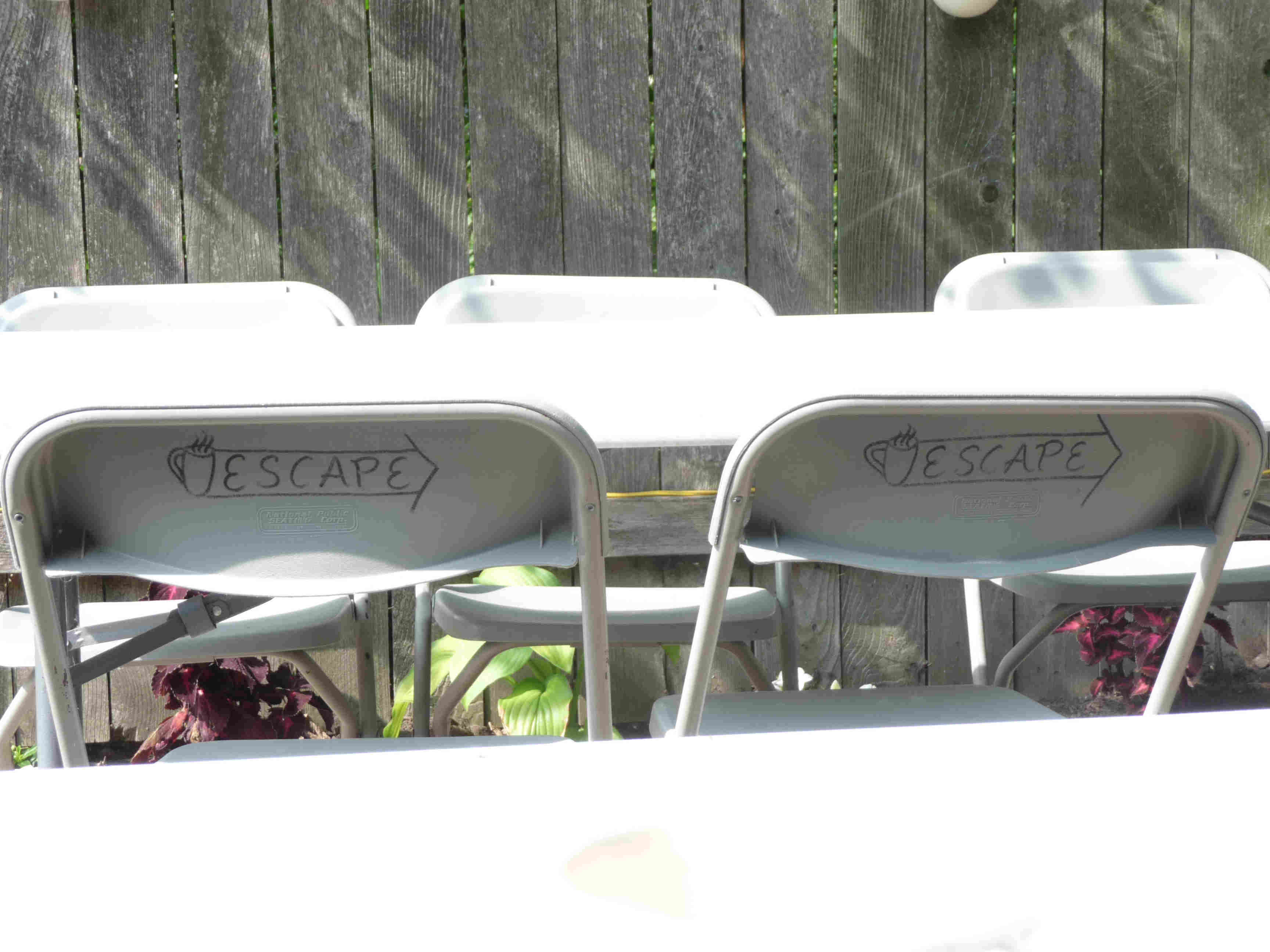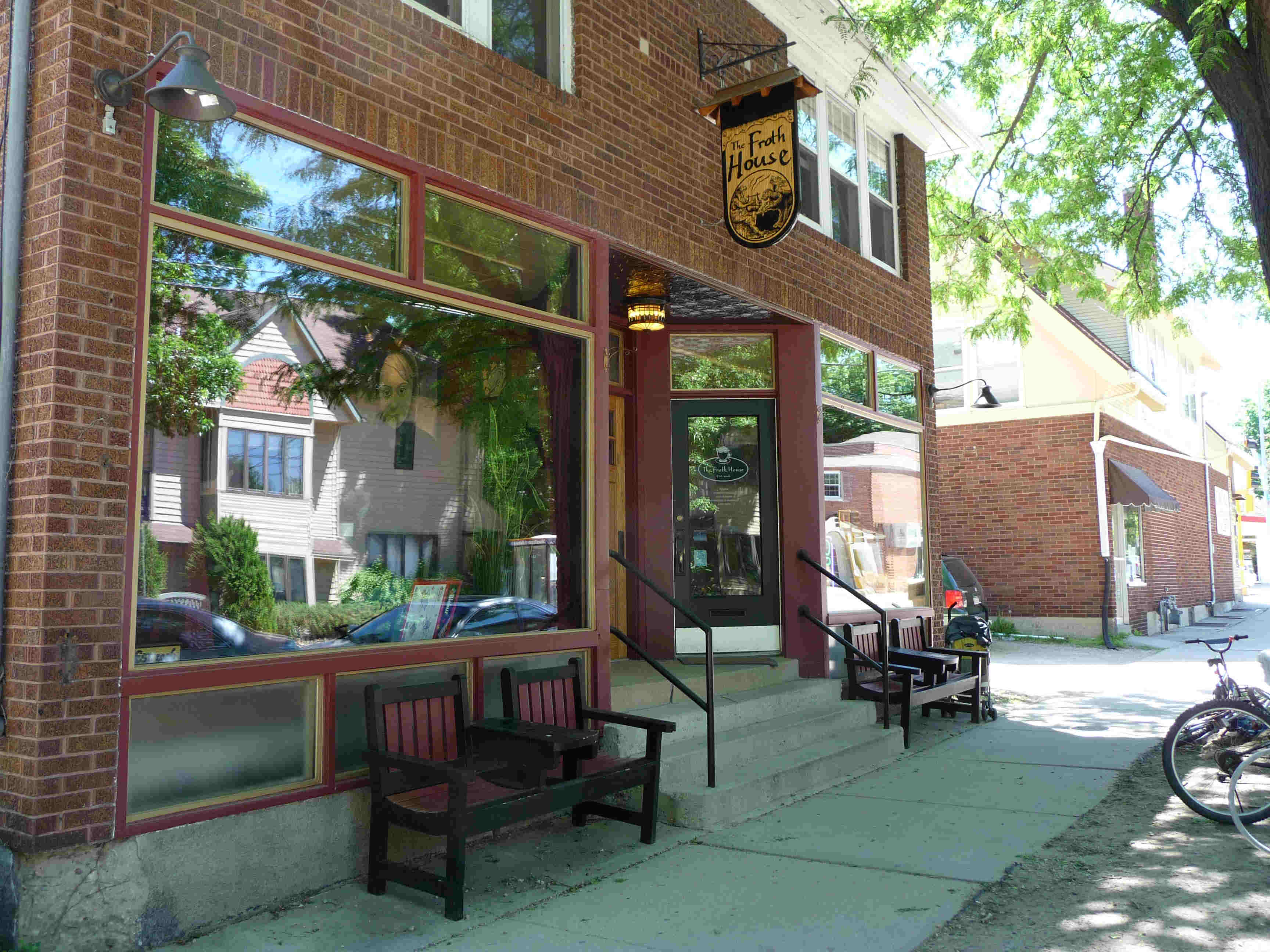As the automobile became the preferred method of travel in the United States during the 20th century, car oriented development became the dominant pattern of city design. Today it is extremely difficult or simply impossible to go about ones daily life without some reliance upon an automobile. Furthermore, in most areas of the country, the lack of one makes a person a second class citizen. For a variety of reasons, there has been a resurgence in the interest for mass-transit oriented developments (TODs). Proponents of this alternative method of city organization argue for its superiority over car oriented developments in efficiency, aesthetics, and livability (to name a few).1 Although there is something to be said for all of these reasons, here I will concentrate on an argument for TODs from the perspective of social justice. Typically arguments from social justice have been among the more controversial because they often involved some sort of redistribution of resources; in American politics it is often unclear how much the rich should be forced to give up in order to help the poor. I hope to bypass this issue by looking at a current public policy that seems to have wide-spread public approval, the Americans with Disabilities Act, and derive from it an argument for government sanctioned support of TODs. In section 1, I describe a number of public policies, including zoning, highway, and accessibility standards for the disabled and from these derive the moral basis for the government support of TODs. In section 2, I explain my argument in detail and address a number of initial concerns. Finally, in section 3, I address the most plausible objection to widespread TOD development – that gentrification could cause the poor to lose their homes. Continue reading Social Justice and Transit Oriented Developments
Activism and truth
I simply don’t trust activists. The reason for this is probably quite clear; activists have stopped searching for truth (whatever sort of thing that might be) and simply focus on how they can argue for some given view. Philosophers who deal with topics that interface directly with the world have the difficult task of straddling the line between simple neutrality and activism. Rhetorical skills are extremely important when dealing with those not familiar with a topic; too often clear, valid but dull arguments fall flat when posed to the general public, and this makes such illuminations of truth completely useless if one wants to make a difference. Some topics are simply too complicated to be comprehensible (all at once and quickly) and therefore need to be distilled down to more simplistic elements that might appeal to a general audience. I don’t want to make any big claim here about any of this, but I do want to elucidate the problem for the philosopher of practical problems.
So how do we stay neutral and yet be effective? It certainly requires good faith; we need to approach these issues with as much neutrality as possible and with truth as our goal. But I think this is often ignored. If we decide for some pre-reflective reason (or after some sort of preliminary reflection) that something is true then it is far to common for us to find cleaver ways to argue for that given view. We can simply feel that healthcare is a right or that urbanity is good without any deep understanding of why. Then it is quite easy to practice a little sophistry and make plausible arguments even though we might ignore a good deal of facts. Or we take facts that exist within some sort of complex context as simple (or straight forward) facts without qualification, even though most facts require a great deal of contextualization. I fear that most of the information you hear from activists is of this simplified sort and it seems obvious that this strategy likely leads to a great deal of deception and confusion.
But I (like most people) have social views that are not totally elucidate and vetted. Does such a high mandate for truth-seeking require me to sit on the sidelines until I am very sure that my views at least approach truth in some meaningful way? (of course I don’t require that we are absolutely sure of the truth, just reasonably so) I hope not; however, it seems as though the unthinking mode of politics (in which we never question our lower level assumptions about how to bring about good) would be in direct conflict with the truth-seeking (or modeling of regularities, if one is going to be difficult) of philosophers, scientists, and any other serious theorists.
And we have a winner…I guess
So, I have been in DC for a few months and after a good amount of research (both on the webs and in person) I feel confident that I know the best place for espresso (and more specifically a cappuccino). If you want something good, go to Perigrine Espresso near eastern market; trust me. After several samples of both their cappuccino and that of their only real competitor Chinatown Coffee Co. (along with a bunch of other places around the area that simply don’t stack up) it became rather obvious that they are the best around. However, I have to say that they still don’t match Bradbury’s in Madison, WI; now maybe if they start serving crepes….. (though there is a crepe cart at eastern market, so a start)
Oh and a side note, Eastern market is a pretty sweet place to be; I want to live there. Now if only I made that sort of money…
And we will miss you Nick Cho! Seriously. When you get all those taxes payed please come back and save DC from its (good) coffee drought. Maybe open something up in Takoma Park too.
How do we deny someone a good?
David Chalmers has coined the term “hard problem” to describe the issue of consciousness; science has had great success solving “easy” problems related to the functional roles of mental states but has had little (and perhaps no) success solving the deeper questions regarding consciousness itself. Although, the existence of some consciousness problem beyond the functional (and scientifically testable) issues of mind is extremely controversial, I think a similar language might be useful when talking about ethics.
We can imagine a case in which someone desires some good (something that they desire to do, that gives them pleasure); perhaps they want to witness animals fight each other to the death. Society, however, might prohibit this; if a person does do this sort of thing they will be put in jail. That would certainly leave the person worse off as far as experiencing goods. So, simply put, society has decided to deprive this person of some good.
There could be an “easy” solution to this problem. If the person reasons morally within a similar moral context as the rest of society then we can show them that setting up animal fights is inconsistent with other moral views that they have. Notice that if this works we are guaranteed a solution that is satisfactory for both society and the thwarted animal killer. It is a matter of logic whether a given moral belief follows from others. Of course, making our moral outlook internally consistent is a lengthy process, but at least we know the process by which this can be achieved.
However, there is another possibility that seems to be “hard”. Imagine the person who wants the spectacle of animal slaughter simply says that they consider animals to have no moral rights whatsoever. They may have metaphysical (or similarly, religious) views that allow them to do anything they want to animals just as we do with machines. As Descartes believed, this person might think that animals are simply automatons; therefore, under their view, to protect animals from needless pain and death is as pointless as protecting robots from a similar threat (and we do watch robots destroy each other without feeling guilty).
This is a “hard” problem because we can not reason this person out of the wish to watch animals suffer. Their view is, at some basic level, incompatible with our own and there is no reason for anyone to choose one view over the other unless they refer to their pre-existing moral views. We can try to find some moral common ground with the person so that they will come around to our point of view, but this attempt may very well fail. So, we must simply deny the person the pleasure they seek. What gives us the right to do this? At this point the process completely falls apart; we must reference yet more moral beliefs of ours (perhaps about how we have the right to protect creatures from harm) in order to justify any action we take. For these cases there can not be any more moral argumentation, only conflict. This makes the problem quite “hard” indeed.
The difference between trains and buses
Some people feel buses are the answer to all our mass transit needs. They will, of course, admit that big expensive commuter rail systems are more pleasant than a fleet of buses (anyone who has ridden on both can attest to this), but they will simply point to the price tag as the major issue at hand. How can we afford such large transit systems?
In fact, if you look at the issue from a certain perspective rail systems seem simply fascist. Whereas bus networks can be easily adapted to meet the ever changing demands of the customers (we must keep them happy!) , rail systems dictate what the customer behavior should be. It is very easy to change a bus route to accommodate a new population distribution (for example, the construction of a new subdivision); it is extremely difficult to change a rail system.
A rail system has the remarkable effect of change the area around it. Transit stops usually become hubs of development; property values go up around them and people try to move as close by as possible. In the Washington DC area, for example, real estate prices are largely a function of distance to a metro stop; people want to use the metro and thus want to be near a stop. But it is not clear how we should feel about this trend. On the one hand, a rail system can have an incredible stabilizing effect on a community. It supports clear neighborhood centers and a maximization of space (i.e. higher density) around the stops of the metro. This in turn greatly decreases the dependence of residents on cars and thus decreases energy consumption; if you live near a metro station/neighborhood center, you have all your basic needs met within walking distance and you can take the train to anywhere else you need to go.
However, the flip side of stability is restrictiveness. The rail will stay where it is for a great while and therefore people are forced to live where that system exists if they want the high quality mass transit that their tax dollars helped build. People must, in effect, react to what the government has provided and are not as free when choosing where to live. The government can, in effect, coerce people to live in a specified pattern. The ethical implications of all this are rather interesting, and when I have time I’ll post about my take on it. However, for now this is an issue about which I am still starting to form a view.
Cappuccino Review #14 – Escape Java Joint
Escape Java Joint
*UPDATE* – NOW CLOSED

- You really have to search for the part with the coffee.
942 Williamson Street. Madison
For an intro about how and why I am trying the cappuccinos of Madison, go here.
The Willy (for Williamson ) St. area is Madison’s most eclectic. It is full of students and hippies. They have their own currency and the towns largest coop. So, it isn’t all that surprising that the coffee shops in this area are a bit odd. Mother Fool’s (which I reviewed earlier and has some of the best cappuccinos in town) is also there, but Escape Java Joint certainly takes the cake in the ‘strange’ department. Trust me, just go there.

The place consists of several areas that are completely different (a couple separate buildings really). When we went we sat in the huge outdoor area; they even have their names imprinted on the chairs. There is no menu, but just have a chat with the guy behind the counter and he’ll try to figure out what you might like. And he will check up on you several times to make sure your drink is good; it shows that they at least care!
Anyway, the cappuccino was decent. Their smallest was a 12oz, so I ordered it dry. It actually reminded me a lot of the cappuccino from Michelangelo’s on

State st. Their scores turned out to be the same (in all regards). I enjoyed the drink, and the strange environment added to the entire experience. So I’m a happy camper. Here are the numbers, all copied and pasted (out of 5):
Presentation: 3
Smoothness: 4
Strength: 3
Complexity: 3
Foam: 4
Correctness: 3
Mean: 3.33/5
SD: .52
So….go there. It is cool and you will have fun. Oh and they have music there a lot; one of their giant rooms has a stage.
Cappuccino Review # 13 – Froth House
Froth House

For an intro about how and why I am trying the cappuccinos of Madison, go here.
Some coffee shops I really want to be great; they have a certain feel that makes you really like them right when you walk in. Froth House is just that sort of place. It is the perfect neighborhood hangout where you expect to run into someone you know if you live in the area. It also helps that it is my neighborhood coffee shop, located by the corner of Allen and Regent next to the Regent street coop, a wine and beer store, a book store, and a number of other small businesses. Basically it is a little town center on Madison’s near west side, which is pretty cool.
The Froth House also has one of the better patio areas I have seen, and they serve food and drinks directly back there through a back window of the store. Throw in the frequent musical acts and it makes their implementation of the patio one of the best in town.
But how is the cappuccino? Sadly not so great. Because the 12 oz is the

smallest size they serve, I ordered a dry cappuccino. I got a drink that was filled to the brim of the cup, not a good sign. The foam was of an ok quality, though there was way too much of it. However, the drink itself was actually quite bad; on my first sip I tasted some coffee, but soon it degenerated into mostly milk (or rather, bitter milk). It was essentially a latte, and a weak one at that. Ok, the numbers: (all out of 5, as usual).
Presentation: 3
Smoothness: 3
Strength: 1
Complexity: 1
Foam: 3
Correctness: 1
Mean 2/5
SD: 1.1
On a more positive note, their Nutella latte is delicious, and their breakfasts are great too. Just don’t get the cappuccino.
Why should we construct transit systems?
One common complaint raised about car-oriented transit is that it is fixated on ‘flow’. Conventional road projects are generally designed to move vehicles, with less concern for the local social dynamics affected by that flow. This means that a large (wide) road is deemed successful if it is able to keep traffic flowing at desirable speeds; when flow is king, the people outside the cars simply do not matter. There are many obvious reasons why this is bad for the community around such a road, but if flow is not the desired outcome of a transportation project then what is?
The question of what we want out of our transit systems gets far too little attention from those concerned about the politics of transit. Many people already ascribe to a view; they may think that flow is desirable (they don’t like to wait in traffic) or instead they might shake their fists at all the passing cars and think how all this flow is ruining their surroundings. But this typically degenerates into a battle between car owners and pedestrians, and these sort of battles rarely end in satisfactorily. It seems that when two large portions of our society are at odds about how to proceed, the only fair path is to rethink the premises that got us to such an impasse. The question I think we should be asking is why we want to build the transit system in the first place?
The simple answer to the above question just goes back to the idea of traffic flow; we want to build a transit system because we want to move people and things. But this doesn’t even seem like a step beyond the question for traffic flow; the fact that movement is important is assumed in the very idea of a transit system. The deeper question we want to ask is why we want to facilitate the movement of people and things; this challenges us to think about the sorts of things we value in life. Such a question also forces everyone to do a new calculation about the cost and benefits of various transit systems. At some point of efficiency, the transit system will destroy the very mode of living that we value; because it is not simply the movement that we value but something which that movement facilitates, it is possible for an increase in movement to lead to a decrease in quality of life. So, even though adding another lane to a road may increase flow (and thus be called an “improvement” in the eyes of the traffic engineers) it could actually harm everyone involved. At some point, being able to move across town a little faster is no longer worth it, especially if you have to destroy the town in the process.
The above is all very abstract, but it needs to be this way because I don’t know how much flow is worth in relation to quality of life. I suspect it isn’t worth much, but this should be an empirical question; we need to start thinking about how movement is necessary for a happy and fulfilling life.
A thought about E-books as I travel across the country
I will be moving very soon, and this has me thinking about how books can be a total drag…in the quite literal sense. My wife and I both have a considerable collection of books and now we have to move all those books. Shouldn’t the advent of e-books render obsolete our need to haul tomes of paper to our new home? I have some quick thoughts about this. It is true that e-ink has made electronic documents attractive to even those (like myself) who find reading backlit displays to be fatiguing. However, in one way (and perhaps only one way) paper documents are superior to electronic ones. An electronic document requires two (and perhaps more) stages of interpretation; a computer takes a digital file and converts it to human language sentences on a screen. Then the reader takes this document and interprets it; this leads to an understanding of the text.
I don’t really want to get caught up in the minutia of how either of these interpretation stages takes place (I know too little about either one to make such talk intelligent), but it does seem that the computer portion of the interpretation is fraught with far more peril than the human end. Human beings have an incredible ability to find patterns, especially when those patterns are well learned like language. This means that we can look at a document that is very degraded (most people have done this before) and are able to get the meaning out of the sentences. A document might look like absolute crap, yet the basic meaning of it can be interpreted by a human. Computers have a much harder time doing this. Imagine taking a cd and gouging it in several places; although it is possible that some equipment could salvage the data on this disk, it would not be the sort the average person would posses. On the other hand, comparable damage done to a book would be easily deciphered by an average (or even below average) human reader.
There is also a secondary concern of having to interpret computer files twice. It might be the case that pdf readers eventual disappear, such that one can not (easily) convert files into english from their digital forms. Of course, English readers could also disappear (thus rendering books un-readable) but this would also render the pdf files in English obsolete. The pdf file is therefore more susceptible to un-intelligibility because either the loss of pdf readers or English readers would render them un-readable. The intelligibility of (English) books only requires the existence of English ut readers.
But, maybe paper just degrades faster than cds or other forms of computer memory; this would be a huge drawback for paper. I don’t know how well acid free paper (typically used in libraries) would stand up to a good cd over the years. This would be an interesting to test.
Madison to DC by rail
I recently had to take a trip to Washington D.C from Madison, WI in order to look for a new apartment. My wife and I decided to try out the Amtrak route that runs from Chicago to Washington D.C; neither of us had been on a modern train the the US, so we thought it might be interesting. It was certainly a worth-wild experience.
Unfortunately, Madison lacks any passenger train service, only a crappy bus that runs from here t o Chicago. There is, however, a commuter train from Milwaukee (about a 1.5 hour drive from Madison) to Chicago so we decided to start our train journey there. Doing that (including the reduced parking fees for train users) made the price of the trip about the same as flying out of Milwaukee and a little less than flying out of Madison. But, the train trip was definitely not an economical choice.
A few things surprised me. For one, I expected very few people to be taking the train from Chicago all the way to DC. “Who would do this?” thought I . After all, it seems like most normal people would not choose the 17hour train ride over a flight of a couple hours. But the train was completely full on both our trip there and when we returned. Luckily we got our tickets ahead of time, so this was not a real problem. This also relates to the fact that the main train stations we stopped at (In Chicago and DC, both named ‘Union Station’) were extremely busy places. They had the feel of airports without all the crazy security; but they were a bit anxiety provoking regardless. And Chicago sucks; nothing is open on Sunday near Union Station and countless people will ask you for money.
Some other things left me yearning for Germany. American rails are pretty crappy. I sort of knew this before the trip, but actually traveling on them reminded me. European commuter railroads (at least the German ones I have experience with ) are quit smooth; this makes for a rather enjoyable traveling experience. However, for the most part, American passenger trains travel on standard freight rail lines that are not maintained at the sort of level required for fast speeds and smooth travel. Expect to be shaken around quite a bit; at some points the train felt as if it was experiencing a sort of minor turbulence. I was told that for a period between Cleavland and Pittsburgh the track was smooth as silk (I was asleep….perhaps because of this); it sure would have been nice if the entire trip had been like that. So, I know that rail travel is capable of being far smoother. The entire operation was also somewhat less organized than I would have liked. We were not given seats (even though we had ‘reserved’ seats) until entering the train; this made us wonder whether we would be able to sit together if we didn’t hurry to the train once the gate doors were opened. I’m not sure if our worries were justified, but it would have been nice to get actual seat numbers on the tickets (though you do actually get tickets mailed to you before the trip, so there is no need to check in and there is no risk of being ‘bumped’).
Otherwise, the trip was ok. And there is one bonus. If you ride the train, you get to see the rusting remnants of the rust belt (I got to see Cleavland…that was pretty exciting). You will pass by vast factory yards that have been long since deserted but for perhaps a few buildings. The highway doesn’t go near these sorts of places, so you usually forget that they exist, that our nation once produced things in such filthy environments; an Amtrak trip will remind you of these industrial wastelands. Sort of fun places to pass in the middle of the night.
Some might worry about the 17 hours it takes to complete the trip, but it isn’t actually all that bad. You get extremely large seats that are ok to sleep in and there are a number of cars between which you can divide your time (dining car, observation car, cafe car). And if you can get to sleep, the trip doesn’t actually feel that long (but don’t miss Pittsburgh!). Also, you ‘feel’ the distance far more than when you travel via airplane; I always feel a bit odd at the end of air-travel, like I haven’t traveled as far as I have. Though, maybe that is just me.
So, to conclude my observations. I would ride Amtrak again, but it certainly is substandard in comparison to European rail. I also wonder why it is not cheaper than travel by air. It might be that the greater staff hours required by Amtrak is the culprit, but I also wonder whether cheap petroleum makes air travel more affordable than it should be. But I don’t have those answers.